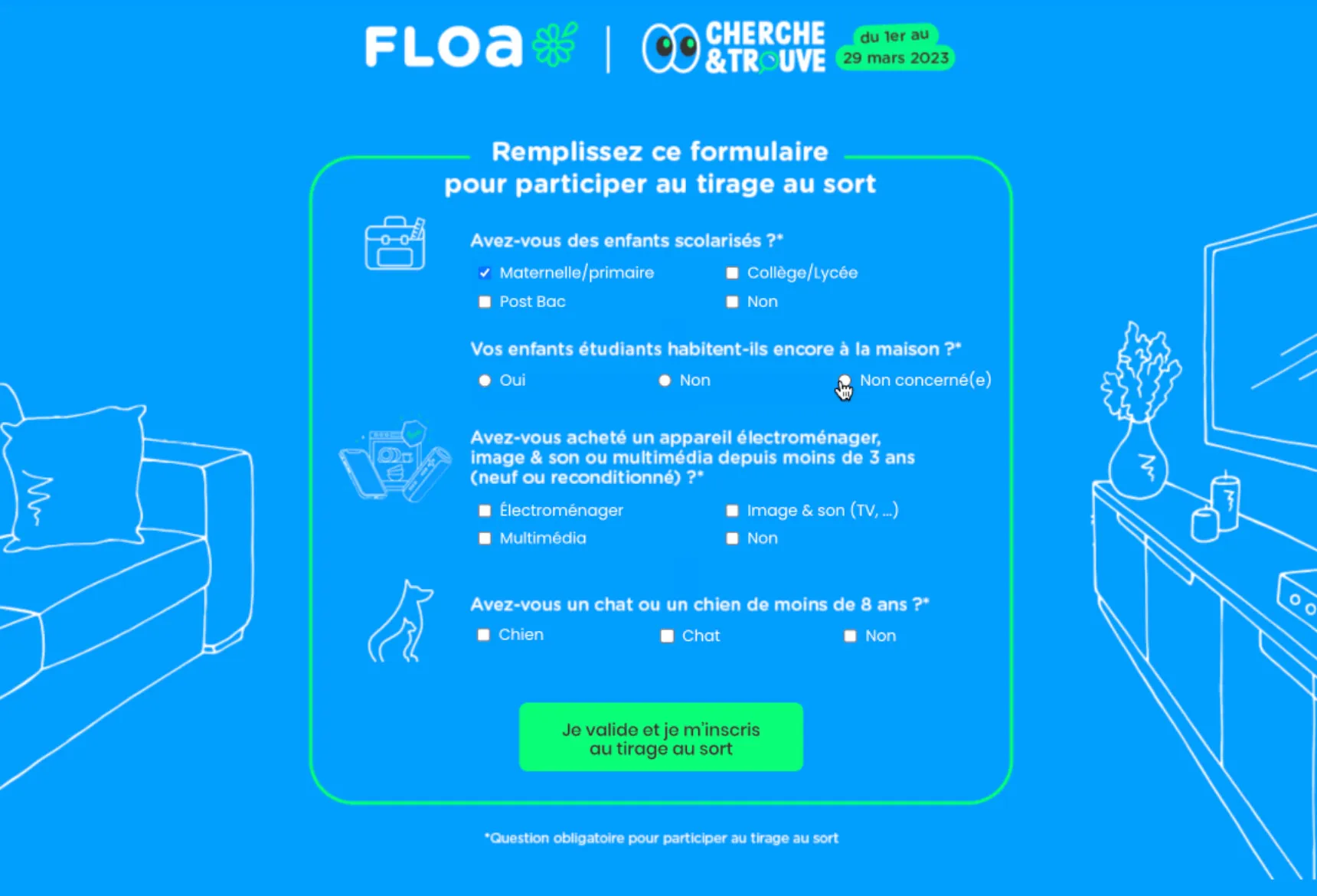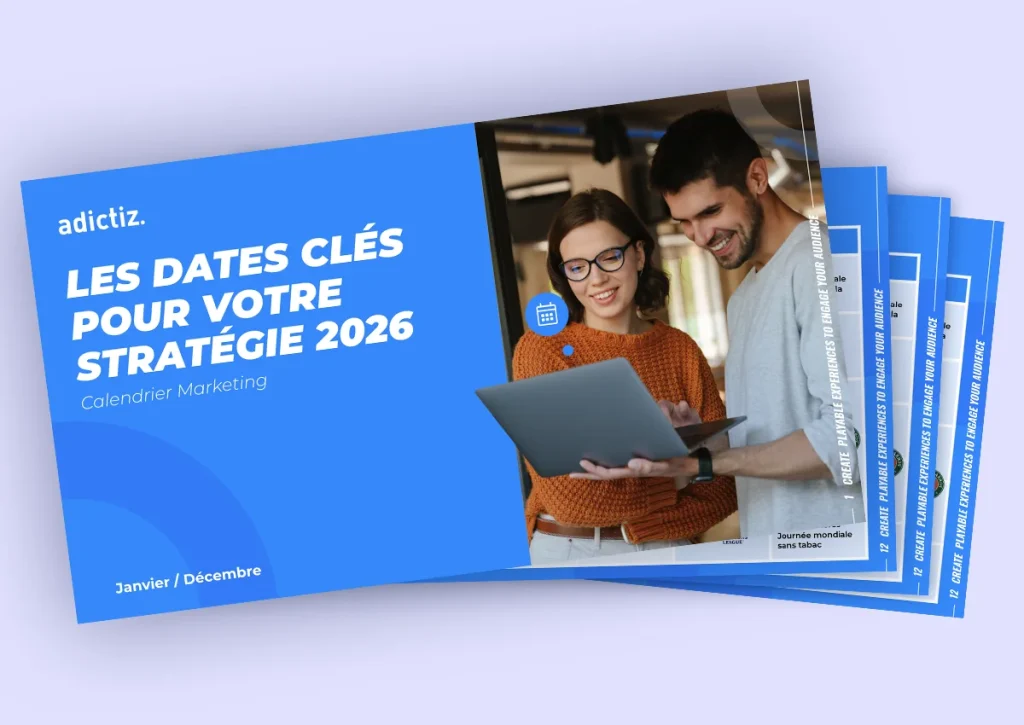
GDPR and Data First Party: solutions for a world without cookies
Cookies are an endangered species. New regulations on the collection and use of personal data are making it increasingly difficult for marketers to understand and predict the behaviour of their audience.
However, there are many solutions for navigating this new digital world without cookies. In this article, we present one of the most effective levers available to brands: first-party data.
What are cookies and why are they so important in marketing?
Cookies are information files stored in web browsers. In practical terms, they enable us to track a user’s online behaviour and provide companies with a vast amount of information. They can then use this information to personalise their customer experience or optimise their online advertising.
More specifically, there are 4 types of cookies:
- Internal cookies, which are hosted on the site and therefore do not share the information obtained with other external platforms;
- Third-party cookies (the most controversial). The latter send the data to the external platforms of online shops (in particular advertising technology solutions);
- Temporary cookies: only stored in the browser during the user’s session;
- Permanent cookies, which store information for future visits.
Cookies are therefore a valuable source of information for brands that want to analyse the behaviour of their potential customers and better understand consumer needs. They help to improve the purchasing process by providing relevant information at the right time. They can also be used to optimise online marketing campaigns by segmenting the target audience.
Why are we heading for a world without cookies?
Users are increasingly concerned about the protection of their personal data. They are aware that they are being tracked online (particularly for retargeting purposes) and are demanding greater transparency when it comes to the collection and use of their data.
According to a recent study by Pew Research, 81% of Internet users believe that collecting their data presents more risks than benefits.
In response to user dissatisfaction, browsers have begun to delete third-party cookies.. C’est le cas de Google Chrome, mais aussi de Safari ou encore Firefox. Idem pour les applications mobiles, notamment depuis le lancement de l’iOS 14, qui a introduit une protection plus radicale des données de ses utilisateurs.
New regulatory frameworks have also been put in place to regulate or even abolish the use of cookies altogether.
- Article 5(3) of Directive 2002/58/EC lays down the principle of prior consent from the user before information can be stored on his or her device or before information already stored on the device can be accessed.
- The GDPR – General Data Protection Regulation (and in particular articles 4(11) and 7) reaffirmed the need for user consent. It specifies that this consent must be free, specific, informed and unambiguous. In addition, users must be able to withdraw their consent at any time, with the same ease with which they gave it.
What data collection practices should be favoured?
For brands, data protection poses a number of challenges. It is becoming more difficult to collect data, and therefore to personalise content or even optimise advertising budgets.
To get round these obstacles, companies are turning to alternatives that no longer rely on third-party cookies. This has several advantages:
- That of owning your own data and no longer being dependent on third parties.
- Companies are more active in collecting data, which enables them to gather more authentic information. In fact, this data is shared directly and more transparently by their customers or prospects (generally in exchange for a promise of value such as personalised offers or discounts).
- Organisations are taking a more ethical and respectful approach the privacy of their users. They therefore create a relationship of trust, in which their customers are informed about the data they share, how it is used and the benefits they can derive from it.
First-party data: the best solution to the end of cookies?
With the arrival of the RGPD, not to mention the tightening grip of the GAFAs on the global advertising market, companies have begun to refocus on first-party and zero-party data.
This first-party data corresponds to information collected directly by advertisers and medias. This includes, for example, declarative data that is shared voluntarily by users (when they fill in a form or sign up for a service/subscription). Behavioral data collected on the advertiser’s website also falls into this category.
This data is therefore known as ‘proprietary’ data, as opposed to second or third-party data (collected and shared by third parties).
When it comes to acquiring data, companies will be concentrating on their internal databases. But also on new advertising technology solutions (particularly those powered by gamification).
Thanks to first-party data, they can continue to collect data. But above all, they will have access to more precise and effective information, whether for email automation, the sending of web notifications or the creation of social media campaigns.
By respecting consumer demands for transparency, brands increase the likelihood that their audience will provide them with more information. Their prospects and customers will have confidence in the way this data is used. For emailing, for example, first party data, shared voluntarily and demonstrating a genuine interest on the part of the user in the brand’s offer, will result in better open rates… It will therefore result in a better deliverability rate (i.e. fewer emails in the spam box).
Gamification as a solution for collecting 1st party data
Gamification (or playable marketing), the application of game mechanics to marketing campaigns, fits in perfectly with companies’ data collection strategies.s. Un contenu interactif et ludique est naturellement plus attrayant et engageant auprès des utilisateurs. Il est donc plus visible et génère plus d’interactions.
To take part in the game, and hope to win rewards, prospects will be more inclined to fill in a form. And therefore to share zero party data. But the game mechanics themselves can be effective levers for obtaining valuable information about your customers.
Let’s take the example of swiper mechanics which involves scrolling through images according to your preferences. It then informs brands about the buying trends and needs of its target audience. This mechanism can use this 1st party data to make personalised recommendations or segment future campaigns.
Conclusion
The end of cookies is not so much an obstacle as an opportunity for brands to change their data collection practices. 1st party data will enable them to obtain more relevant and transparent information, and therefore to create and maintain a relationship of trust with their audience. To collect first-party data, rely on gamification and discover all our different interactive advertising formats!










